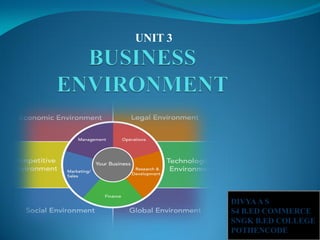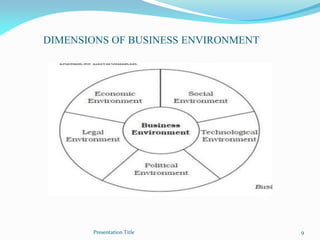The document discusses the business environment in India. It defines business environment and explains its key features, including that it is the totality of external forces, consists of both specific and general forces, is interrelated, dynamic, uncertain, complex, and relative. It then covers the various dimensions that comprise the business environment, such as economic, social, technological, political, and legal. The economic environment in India is analyzed in depth. The objectives and features of India's development plans and economic policies over time are also summarized.






















